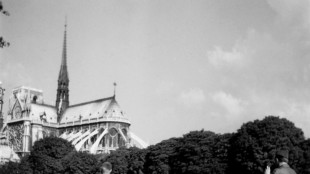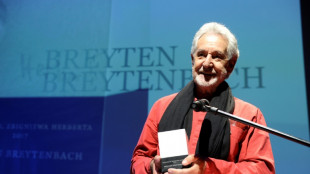

Towering Colossus of Constantine reconstructed in Rome
Two giant feet, a knee, a bicep and an enormous head -- archaeologists have reassembled these few marble fragments to reconstruct the Colossus of Constantine, a larger-than-life statue of the first Roman emperor to embrace Christianity.
A reproduction of the 13-metre seated statue, a bronze cloak draped over Constantine's left shoulder, was publicly unveiled on Tuesday, offering a rare view of the towering statues built in ancient Rome to glorify the gods or emperors.
"The impression one has before this sculpture of the emperor elicits what must have been the sensation of his subjects before an imperial image," said Claudio Parisi Presicce, Rome's top official for cultural heritage.
For hundreds of years, various pieces of marble still displayed today within the museum atop Rome's Capitoline Hill were all that remained of an imposing statue of an emperor or divinity.
It was not until the late 19th century that the protagonist was identified as Constantine the Great, the first Roman emperor to convert to Christianity, who moved the seat of the empire from Rome to Constantinople before his death in 337.
Resin casts of ten huge marble body parts have now been brought together to create a towering statue in a garden behind the Capitoline Museum, showing Constantine with a nude torso and holding a staff in one hand and globe in the other.
- Jupiter link -
The originals comprise two hands and two feet, a knee and shin, two fragments of bicep complete with bulging veins, a portion of chest and Constantine's massive head, complete with a Roman nose and cleft chin.
The statue they form is the largest handed down from antiquity, Parisi Presicce told journalists.
While not the largest ever built -- the infamous bronze Colossus of Nero was over 30 metres high -- "it is the largest among those preserved," he said.
The pieces have been housed atop the Capitoline Hill since 1486 but "no one had ever thought to study what the relationship between these fragments was", he said.
Closer study, however, allowed modern-day archaeologists to determine that parts of the statue of Constantine were perhaps readapted from an earlier statue.
In particular, details at the chin indicate that the original statue wore a beard.
One theory is that the statue depicted Jupiter, king of the gods, and was the centrepiece of ancient Rome's most important temple atop the Capitoline Hill, whose foundations are still visible today.
Coins and medallions from the era just before Constantine depict Jupiter seated with his right knee exposed, similar to Constantine's pose in his Colossus.
"Constantine is only the latest in a long chain of emperors who have had themselves depicted as Jupiter," Parisi Presicce said.
The statue will remain in its current location at least through the Jubilee Year of 2025, in which millions of Catholic pilgrims visit Rome.
City officials will make a later determination over its permanent resting place.
T.M.Kelly--NG



